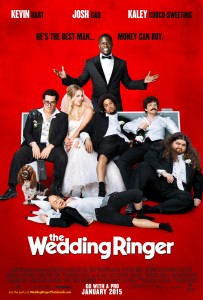 The Wedding Ringer, a 2015 comedy starring Kevin Hart and Josh Gad, isn’t very memorable from an artistic perspective, but I did want to address the premise of this movie before it fades permanently from the zeitgeist.
The Wedding Ringer, a 2015 comedy starring Kevin Hart and Josh Gad, isn’t very memorable from an artistic perspective, but I did want to address the premise of this movie before it fades permanently from the zeitgeist.
Quick (spoiler-free) synopsis: the titular character sells “best man services” to grooms whose lifetimes of social inadequacy have left them unable to find a single friend to take on the role. At a minimum, he’ll play the part of the best man. On the other end of the spectrum, and for the right price, he’ll also provide a whole entourage of groomsmen.
Completely unrealistic, right? I mean, how could anyone, much less a guy who looks and acts like Kevin Hart, manage to pull this off and not get caught? Especially given the way that wedding photographs spread across social media these days? A completely legitimate concern–one that I’ll address fully later in this piece–but I thought it would be a fun thought exercise to determine if this line of work would be even remotely feasible. Turns out, the answer is…maybe, as long as you apply heavy doses of suspension of disbelief.
In the movie, Kevin Hart’s titular character lives in Los Angeles. I don’t think it’s mentioned in the movie that he’s worked outside of the city, so let’s assume that all of his work is local. In April 2013-March 2014, there were 62,565 weddings in Los Angeles county. Let’s make a conservative estimate and say that only 5% of those weddings entail a best man AND involve a groom who’s wealthy enough to afford the specialized services of a wedding ringer. Now, let’s assume that, of that 5%, only 5% of THOSE weddings involve a groom who’s desperate enough to need the services of a wedding ringer. That works out to a potential market of 157 weddings per year.
So far, so good. That’s more weddings than there are weeks in a year. But the wedding ringer doesn’t want to spread himself out too thin, given the amount of preparation involved for each gig. Let’s assume that he works 30 out of 52 weeks of the year (this is Southern California, so there’s no such thing as wedding un-friendly weather) and that he averages 1.5 weddings per weekend. That comes out to a total of 45 weddings per year, or less than 1/3 of the total number of prospects in a given year. It feels intuitively doable, especially if he has little to no competition (none is mentioned in the movie). Now, let’s assume that his net profit (after expenses) for each wedding is $5,000. That works out to a total of $225,000 of annual income, which feels more than appropriate for a job that requires a special set of skills in a major US metro area.
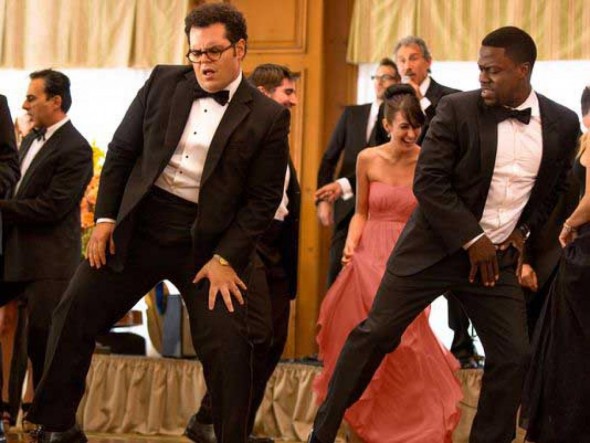
Now, about the risk of the wedding ringer’s cover being blown. It seems like a huge risk, because it is. All it takes is one wedding guest who’s seen him at another wedding, under another identity, to blow his cover. Actually, it takes less than that. All it takes is one Facebook friend of a wedding guest who’s seen him at another wedding to blow his cover. The movie does the bare minimum of explanation for this: it shows multiple pictures of the wedding ringer wearing different wigs for each wedding he goes to. To accept this, we have to apply a heavy dose of suspension of disbelief and accept that the crappy wigs are actually enough to prevent recognition, particularly on social media.
We also have to fill in one of the gaps that the movie didn’t address: before taking any gig, the wedding ringer would need to run each guest list against all previous guest lists for weddings he’s attended to ensure that no guest has seen him before.
When I first realized this, I thought that this had to present an insurmountable obstacle to his business. But let’s try a back-of-the-envelope calculation to understand the implications of this. According to the US Census, the total population of LA County in 2013 was 10,017,068. Let’s narrow that down to the adult population of the richest 5% of LA: 384,656. Let’s further narrow that down to the 48% of adults who will attend a wedding in a given year: 184,635.
The most recent US wedding survey indicates that each wedding has an average of 138 guests. Let’s assume that, for each wedding, 75% of those guests, or 104, are local to LA County. At 104 guest per wedding, the richest 5% of LA County can result in a maximum of 1,003 weddings with completely unique invitation lists. That’s 1,003 out of 3,128 of the richest 5% of weddings in LA county.
In other words, whenever the wedding ringer sizes up a potential customer, at the point of checking the guest list, there’s a fairly high chance that there’s at least one guest who’s appeared at one of his previous weddings. So that 1/3 conversation rate we came up with earlier starts to look a little more challenging to pull off, given that he has to contend with the guest list restriction along with the general uncertainty of winning business from any groom. More challenging, but still not impossible, especially when looking at the $225,000 earnings we computed. If he only managed to pull in half of the business we estimated earlier, he’d be taking home $112,500 per year, still a respectable amount of money.
Things would probably get much more difficult after the first year, as the challenge of finding an entirely unique guest list only grows over time. Each time he presents himself to a room of wedding guests, he closes off dozens of potential future weddings, and this problem just grows and grows over time. (I don’t have the math chops to quantitatively model this, but if you do, I’d love to see you weigh in on this in the comments.) And even if you put a lot of faith in the power of those wigs, there’s no amount of movie logic that can make those wigs 100% effective. Facebook will eventually betray him.
But keep that disbelief suspended for just a little bit longer–we’re almost done.
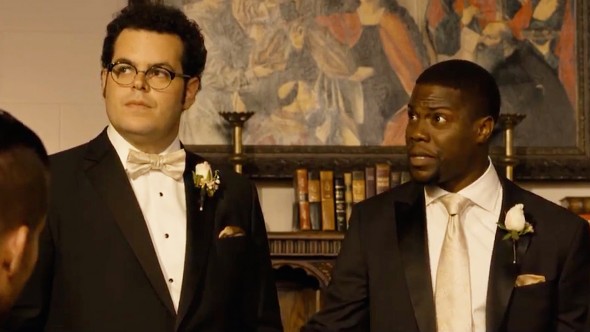
There’s one final challenge to the feasibility of the wedding ringer’s business plan: his race. The wedding ringer is black; the vast majority of his clients are white. The richest quintile of the US population is 88% white and only 4% black. A recent survey showed that 75% of white Americans lack even a single close friend who was not white, much less black. Given these statistics, it seems exceedingly rare for a rich white man to have a black man as the best man at his wedding.
To the movie’s credit, this actually is never brought up as an issue. Why to its credit? Ignoring the race issue, rather than trying to address it, prevents a complicated and thorny issue from calling more unwanted attention to the shaky premise of the movie. And more importantly, the movie is just not about race; it’s about friendship and social isolation. With a small number of exceptions, it avoids making obvious jokes about race. (To its detriment, it does makes a lot of obvious jokes at the expense of women, but that’s outside of the scope of this discussion.) The movie’s two protagonists each overcome their respective obstacles to find friendship and self-actualization in each other. Materialism, insularity, and societal expectations are among those obstacles; racial antipathy is not.
So, in conclusion: is the wedding ringer’s business plan feasible? For a limited time period, it might be, if you’re willing to believe in the depth of social ineptitude of rich grooms in LA, the open mindedness of LA wedding guests when it comes to ideas of race and friendship, and of course, the nearly boundless power of wigs to conceal identity.
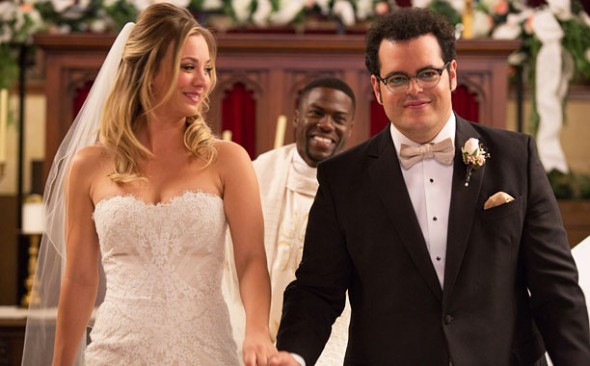
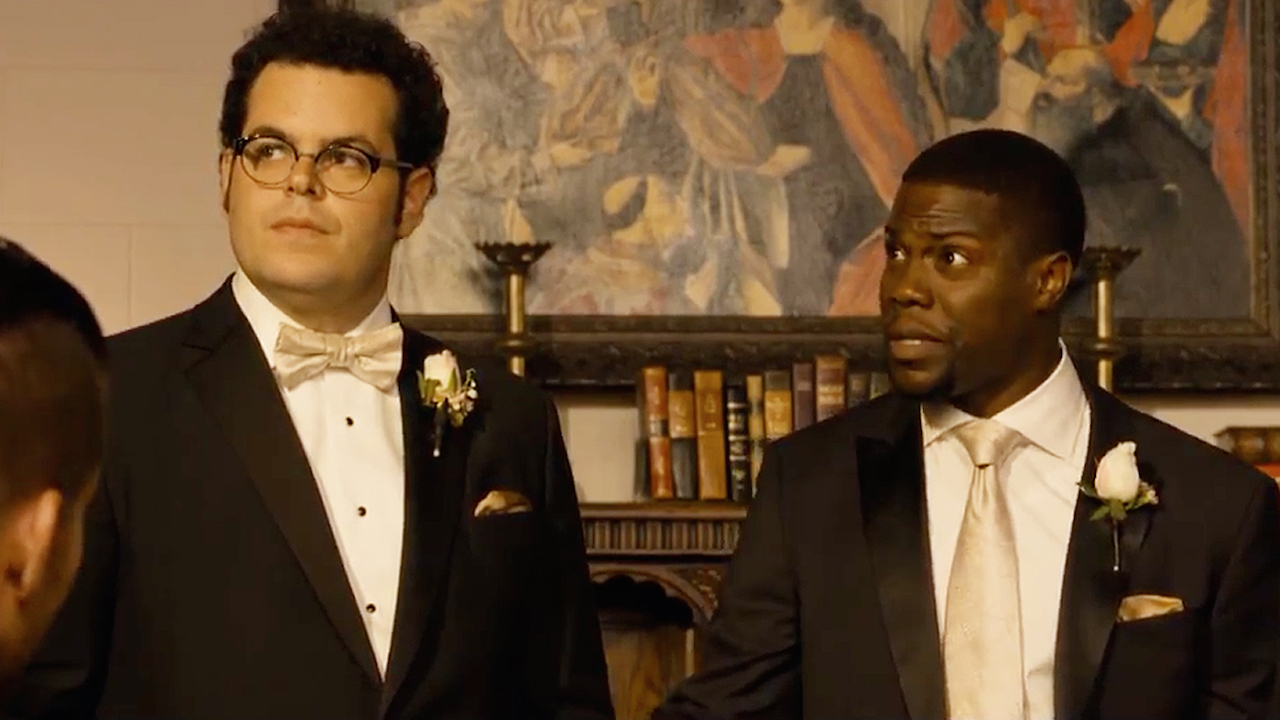
Hart is screwed. This is closely related to the birthday problem (http://en.wikipedia.org/wiki/Birthday_problem), which illustrates the unintuitive fact that it only takes 23 people in a room to hit 50% probability that two of them share a birthday.
Assuming that wedding guests are distributed randomly among weddings, the question is how many times we can pick 104 guests from a pool of 184,365 people before someone crops up twice.
The first wedding is (obviously) unproblematic.
At the second wedding, the first guest has a (184,635-104)/184,635 chance of being unique, which is 99.94%. The second guest has a (184,634-104)/184,634 chance, which is basically the same thing, and so on through the 104 guests. Though all those probabilities are individually very strong, after you’ve combined them you’re down to overall odds of only 94.2% chance that the second wedding is clear.
At the third wedding, we’ve got 208 unusable guests, and our overall probability drops to 83.7%.
By the fifth wedding, Hart’s got barely better than 50% odds that he’s facing a unique guest list.
The odds that Hart makes twenty weddings are infinitesimally low.
Here’s the breakdown:
1 100.0000%
2 94.2538%
3 83.7301%
4 70.1025%
5 55.3147%
6 41.1327%
7 28.8244%
8 19.0346%
9 11.8446%
10 6.9452%
11 3.8371%
12 1.9975%
13 0.9797%
14 0.4527%
15 0.1971%
16 0.0808%
17 0.0312%
18 0.0114%
19 0.0039%
20 0.0013%
Most plausible business model: a small handful of people go into the wedding ringer business, mostly focused on large metro markets. Every few years, to lower the identification problem, they move to a different metro market: from L.A. to New York, from New York to Chicago, from Chicago to San Francisco. As a “ringer” becomes older and more affluent (I assume that some of the substantial take is saved and that a considerable amount is under the table earnings) he begins to do an older, smaller “fly in” circuit, places like Palm Springs or Aspen. As for identification: rather than a wig, facial hair (or any hair at all, for the bald) probably extends the duration of a given market.
If you wanted to model explicitly the likelihood of identification, I think you have to use three probability estimates: (i) what is the likelihood of someone from a previous party being in the current party; (ii) what is the likelihood of that 1 (or more) individuals recognizing the ringer and (iii) does the ringer say anything in public.
As for explicitly modeling this: it can probably be captured with a Bernoulli distribution, although I haven’t thought this through.
Since the best man usually gives a toast and is expected to orchestrate the bachelor party and so on, that seems pretty implausible. What might be more plausible is to suppose that each groom can find one lousy guy to be the best man and then has a ringer service fill out the rest of the wedding party. Less chance of anyone exactly remembering all the groomsmen, plus a larger rotating pool of workers. Would work for ladies too. And the value proposition of being able to fill your reception with a number of attractive, well-spoken people who are your good friends is obvious.
Does he use a unique identity for each wedding? Wouldn’t he reduce risk by reusing the same identity for multiple weddings? It’s plausible that a single person could have a handful of close friends he would be best man for. If somebody saw him at two weddings as Joe Bloggs, that’s hardly something you need to explain away, he’s just good friends with both Groom 1 and Groom 2. He would till have to change every few weddings, but that would defray the risk somewhat, right?
A few points:
1. It’s entirely possible for the same person to legitimately be the best man at multiple weddings, if he’s friends with different grooms. This means that the threshold for suspicion would be raised from 2 weddings, to something like 4 or 5. And even that could be explained away as a strange coincidence.
This is especially important, since he’s never going to be scrutinised by friends of the groom, since he apparently has none (or no close ones). Only the friends of the bride are going to look at him, and they would not know anything about the groom’s social circle.
2. The likelihood of guests being suspicious would obviously diminish over time. If you saw the same person as best man on consecutive weekends, that might ring alarm bells. But after a year or two, the guest list would be less likely to find it suspicious, and, indeed, a lot less likely to recognise him at all.
3. Taking a cynical view, the matter of race might work in his favour. Instead of being more recognisable as the one black guy, it might be that the white guests see little or nothing other than that he is black. Like the old “all Chinese look alike” thing. If the guests focus only on his race instead of his individual characteristics, it would make it a lot easier to pretend to be a variety of people. He would always be “a black man” instead of “that particular black man.”
4. Finally, the risk doesn’t lie on the best man. It lies on the groom. If worst comes to worst and the truth is exposed, it is the groom who will suffer the embarrassment. The best man could make that clear prior to completing their contract, and ensure he would still get paid.
Now, you may think that once the best man is exposed at one wedding, it’s game over for his business… but not really. At this point, we can go back to applying the guest-list rules where suspicion occurs if a guest attends 2 weddings, because only attendees (and friends thereof) at the first wedding would be aware of the exposure. Unless the news was widely propagated on social media. And even then, if his disguises were sufficiently good, the best man could still appear in front of the same guests again.
Your point 3 was what I was thinking as well. Even if someone would see him at several different weddings (be it on the day itself or on facebook), and think it’s the same guy, most guests would just write it off as an ‘all look same’ thing, perhaps scold themselves a little for apparently being racist, and move on. It’s probably a lot easier to pull off for a black or an Asian guy than it would be for a white guy.
No white person is going to meet a black man for the first time, and say “He looks just like this other black man I met once a few months/years ago.”
He is safe forever.
While in general I agree with your analysis, there’s one data point you don’t have mentioned about Kevin Hart’s blackness and primarily having a white clientele: cross-race effect, or “why it’s easier to tell people of your own race apart than those who aren’t.”
http://en.wikipedia.org/wiki/Cross-race_effect
http://www.livescience.com/14879-faces-races-alike.html
http://www.apa.org/monitor/dec00/lookalike.aspx
http://www.theguardian.com/science/neurophilosophy/2011/aug/15/people-other-races-look-alike
Facebook aside, all these white people may not be pegging that they’re seeing the exact same best black man at every wedding, especially if they don’t know him very well or at all, and if the only thing that’s really distinguishing about his appearance is a silly wig. Hell, who remembers the people that you randomly partied with months or years ago for a few hours?